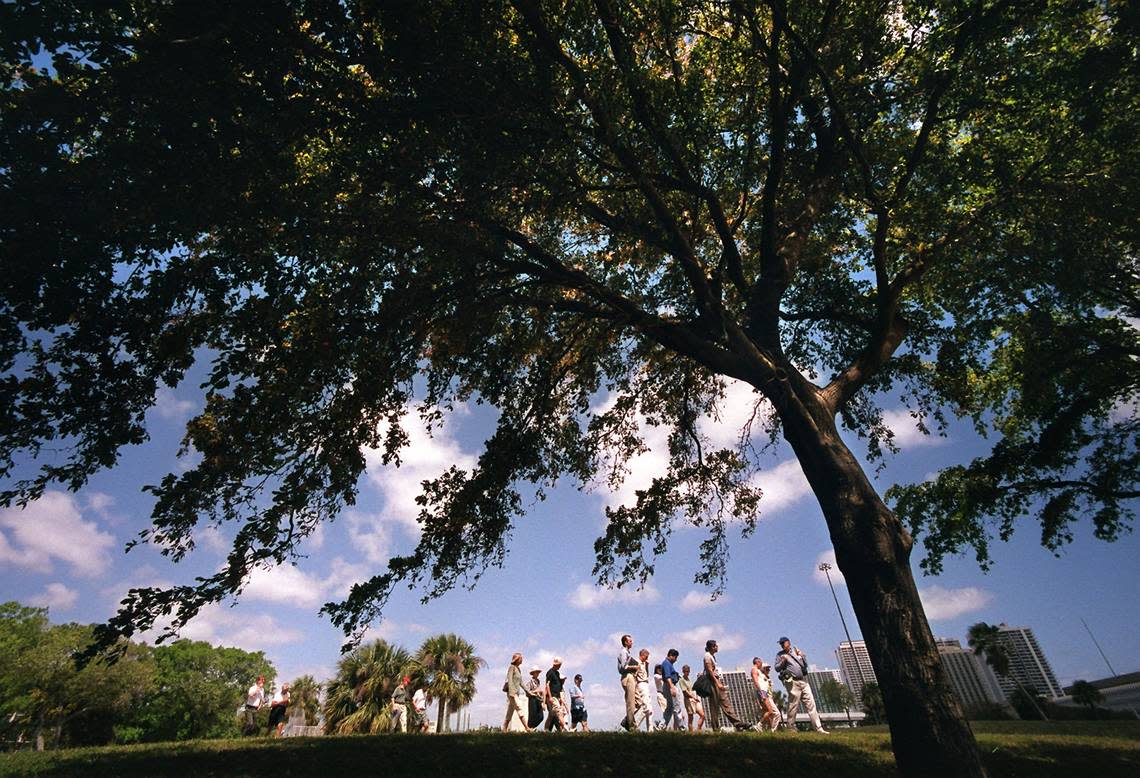What did this downtown Miami spot look like in the 1970s and ’80s? It wasn’t pretty
You may know this Miami park for its art and science museums. But for years, the future Museum Park, now known as Maurice A. Ferré Park for the late former Miami mayor and civic force, had struggled to find an identity.
The park, just north of the Miami Heat arena, was opened as Bicentennial Park in 1976. But soon, crime and homeless issues kept visitors away from the park, which opened up to Biscayne Bay in back but could hardly be seen from busy Biscayne Boulevard from the front.
READ MORE: What did Miami’s downtown waterfront look like before Bayside Marketplace?
In the 1990s and early 2000s, the park became a place for events, including circus troupes and concerts. But unless you were going to those, you likely weren’t strolling there or having picnics. Even a Metromover station at the park entrance was shut down.
Enter the museums, and their vistas of the redesigned open space and the waters of the bay. But that is now.
And this was then
Here is a look through the photo and story archives of the Miami Herald at what started as Bicentennial Park in downtown Miami.
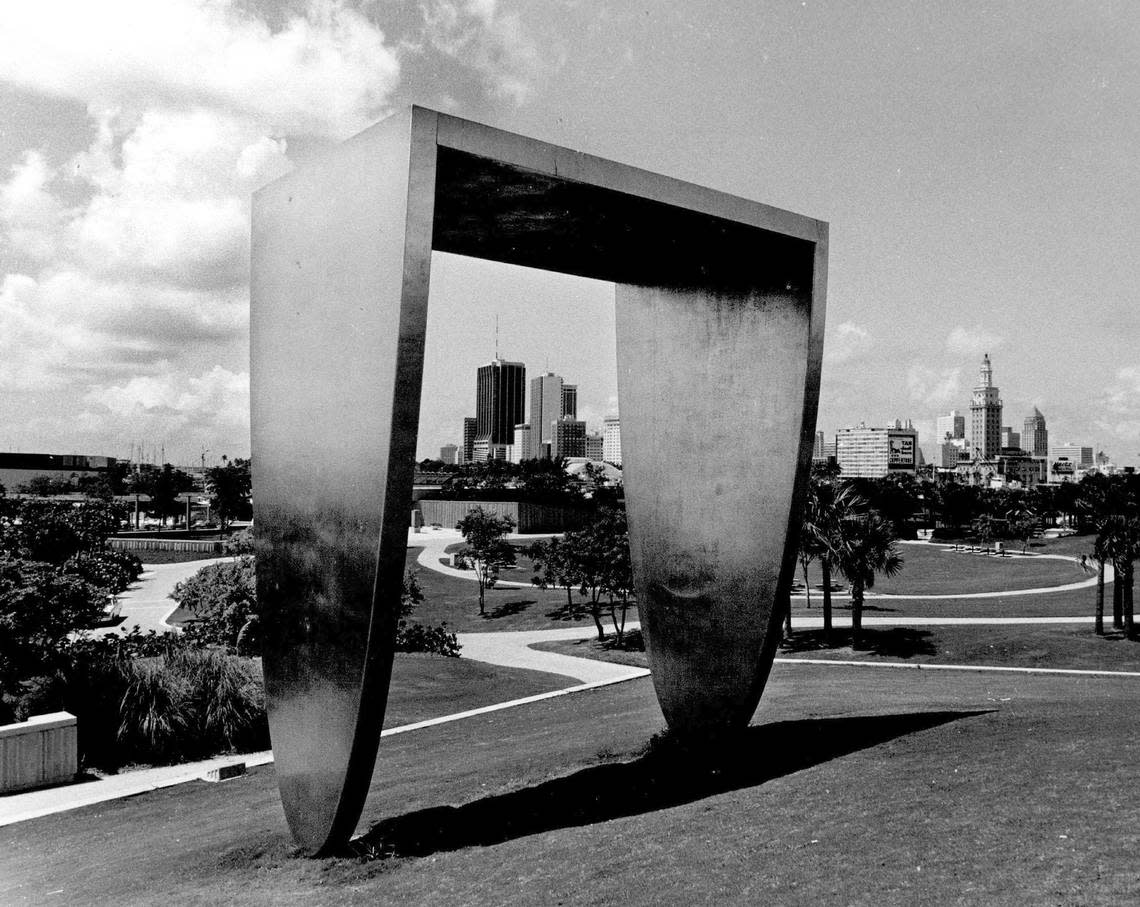
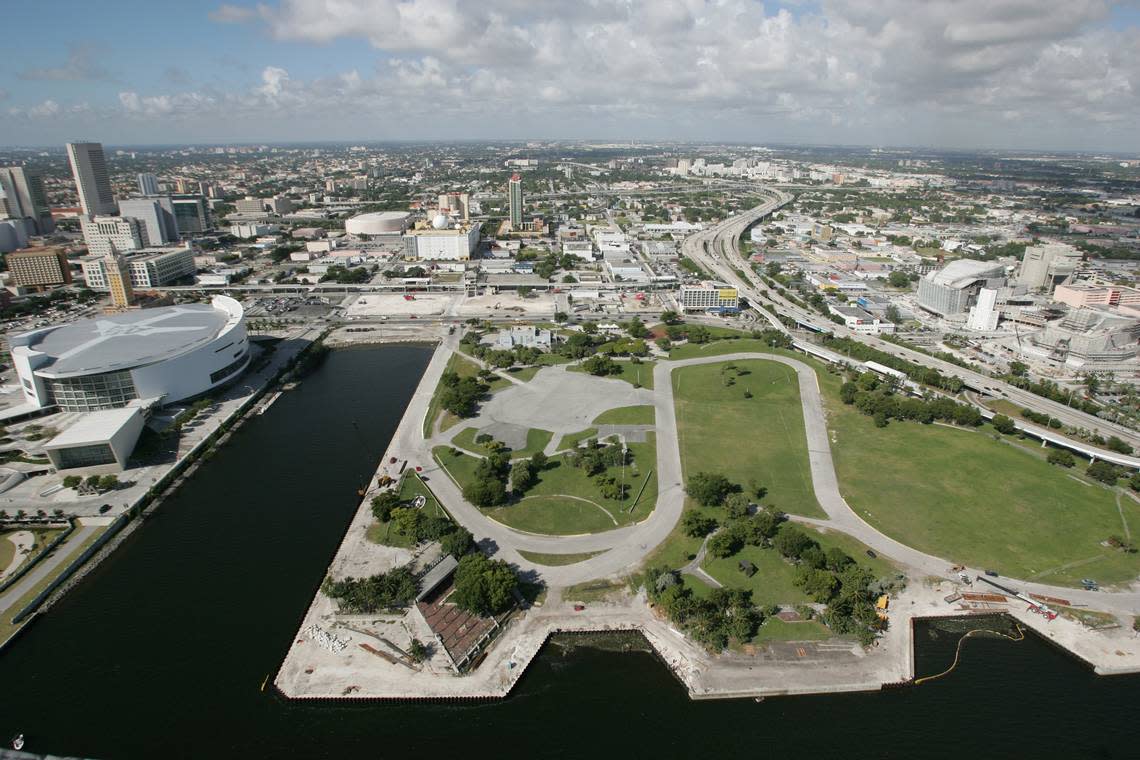
Reviving the park
Published Jan. 14, 2008
By Michael Vasquez
Biscayne Boulevard’s new, gleaming brick sidewalks serve as a virtual red carpet for Miami-Dade County’s performing arts center.
In reality, the carpet doesn’t stop there. One could, if inclined, follow the brick sidewalks south and find breathtaking views at a city-owned waterfront park.
Never taken that 2½-block journey? You’re not alone. Getting there means trudging underneath a highway overpass and passing a sewage treatment facility.
Others won’t walk south to Bicentennial Park . . . because of the park itself. Shade is scarce. A hollowed-out water fountain has become a makeshift garbage can. Benches fronting the water have long been removed, leaving metal frames that homeless people use to dry clothes.
“It’s not inviting,” Miami Mayor Manny Diaz admits. “It’s desolate.”
A massive public works plan adopted with lightning speed by city and county leaders could transform this underused gem. The plan earmarks $68 million for a shadier, prettier Bicentennial Park, to be renamed Museum Park in honor of two museums planned for its northern edge.
Other spending could reshape downtown - including a port tunnel to remove truck traffic from streets, and a new streetcar that performing arts center visitors could hop onto for a trip to the Civic Center or Midtown/Design District. Downtown could emerge with a pedestrian-friendly, welcoming feel.
If downtown is the heart of the city, reviving this historical wasteland is core to Diaz’s vision.
Miami’s downtown has long been a nightmare for pedestrians, a clogged artery for drivers and an uninviting hub for tourists. Even the high-rises sprouting along Biscayne Boulevard have yet to bring vibrancy to the area.
Putting a fresh sheen on this pocket of Miami is more complex than simply drawing up plans and coloring them with optimism. Previous bids to revive downtown often fell flat, and even this newest plan -- the most ambitious to date, with widespread support from political leaders -- is drawing some objections.
Luxury auto dealer Norman Braman, for one, argues that community redevelopment money that would serve as the glue for the public works bonanza is being diverted from its intended use: helping the poor.
Braman has threatened to sue, and radio ads he is financing aim to stir more opposition than has surfaced.
“The downtown development deal,” one ad says, “is a downtown double-cross.”
Mayor Diaz replies that the $2.9 billion package will spur new life in downtrodden neighborhoods, creating a domino effect that will benefit multitudes.
The blueprint would also free up hundreds of millions of dollars for a new Florida Marlins baseball stadium a few miles west of downtown at the Orange Bowl site in historic Little Havana.
Bicentennial Park, where massive changes are afoot, is a key piece of the puzzle.
Voters in the city and county have twice approved referendums that together allocate nearly $300 million in public funding to build a new art and science museum.
The museums must also contribute a combined $220 million to construction and have been actively working on design plans. The Miami Art Museum hopes to break ground later this year.
But, without the $68 million laid out in the new downtown framework, those museums wouldn’t have much of a front yard. A grim scenario: shiny, elaborate new museums occupying about a third of the park, with the remaining 19 acres staying in their current scruffy state.
City leaders say that’s not acceptable. Add the $68 million, they say, and you have a world-class public gathering space, with potential amenities including a public baywalk, playgrounds and/or a splash park, and a “Great Lawn” surrounded by hundreds of trees, paths and gardens.
The fuller details of how Miami would revive its long-neglected waterfront park are being refined, though the city plans to unveil its latest plans at a 6:30 p.m. Thursday meeting at Miami Science Museum Theater, 3280 S. Miami Ave.
Some critics of the Museum Park concept are uncomfortable that the park’s supposed renaissance relies on the placement of large museum buildings, further reducing Miami’s already meager park acreage.
“That’s a ridiculous waste of money,” said Campbell Sinclair, a 53-year-old Canadian visitor to Miami who spent a recent afternoon relaxing at the park. Bicentennial could enjoy new life with just the basics, Sinclair argued -- improved lighting, greater security, decent restrooms.
“How about spend $4 million and cut the grass?” he asked.
City leaders counter that the museums are a necessary lure to Bicentennial, a park virtually sealed off from the public by the interstate, the sewage facility and walls that flank its entrance.
At times, museum backers have compared the proposed Museum Park with Millennium Park, the renowned Chicago locale that draws millions of visitors a year through its concerts, ice rink and seductive artistic features.
The same public works plan that would help make over Bicentennial also holds potential for its neighbor 2½ blocks to the north, the recently renamed Adrienne Arsht Center for the Performing Arts.
The arts center would not be physically altered by the downtown development plan, but its financial model would be fundamentally changed.
Until now, county taxpayers have been largely on the hook for paying back bonds that helped finance the PAC’s roughly $473 million price tag.
By tapping heavily into community redevelopment money from Miami’s downtown Omni neighborhood, the city/county agreement shifts more of that debt burden to Omni taxpayers. Ultimately, County Manager George Burgess projects roughly a quarter of the PAC construction cost will be paid through Omni property taxes -- about $100 million in current dollars. The city’s internal projections estimate Omni’s contribution to be much higher.
Omni neighborhood activist Fred Joseph acknowledges the arts center has been an economic catalyst and says some sort of Omni subsidy is justified. In fact, even before city and county leaders settled on their “global” public works plan, Miami’s Omni Community Redevelopment Agency cut the PAC a $1.4 million check annually.
But Joseph bristles at his neighborhood’s new, increased contribution. He said he has pleaded with the arts center for a perk in return - such as Omni residents receiving a ticket purchase discount on shows that aren’t selling out.
“Why should Omni pay and not get something?” Joseph said.
Ricky Arriola, chairman of the PAC’s board, said the idea is worth looking into. “You want to be good neighbors,” he said.
Unlike the arts center (already here) and Museum Park (well on its way), another project in the downtown blueprint - building a streetcar - is far from certain.
The mass-transit proposal, which would bridge downtown with the Civic Center and Design District neighborhoods, is estimated to cost roughly $200 million to build.
Miami’s downtown development plan calls for the county to pick up $20 million of that tab.
Diaz is hoping to secure enough money from state and federal grants, the city’s share of the half-cent sales tax for transportation, and other funds to entice a private vendor to build, operate and maintain the system over a lengthy contract.
But with less than two years to go in Diaz’s final term, it’s still a long shot.
The mayor remains optimistic, and predicts that, in time, the streetcar and other downtown improvements will make Miami a remarkably different city.
It is a city the mayor alluded to in 2005, in his annual State of the City report titled The New Destiny. Diaz invited residents to “imagine the possibilities” of a radically reborn Miami.
He described a Wynwood man riding the streetcar to work, a woman mulling whether to spend her evening at the performing arts center or Museum Park, citizens taking a walk to shop or grab an espresso -- but walking, always walking.
Today, where sparkling brick sidewalks connect a new arts center with a largely forgotten park, the pavement awaits.
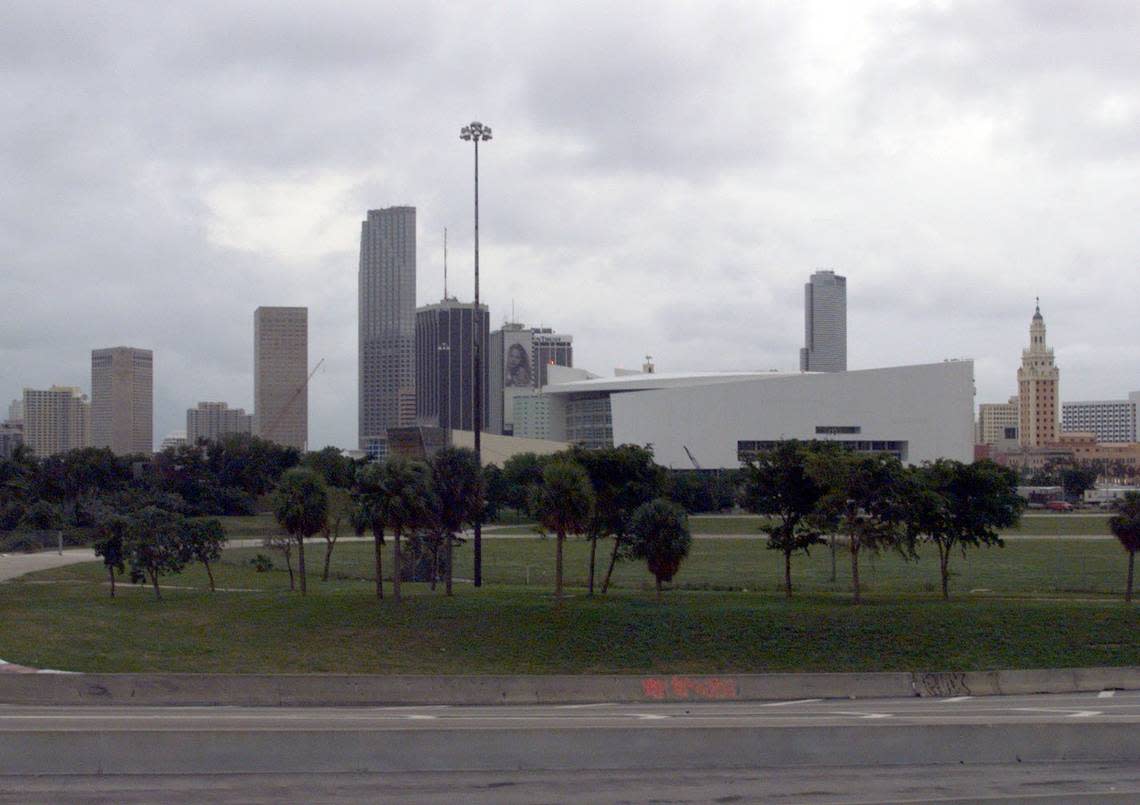
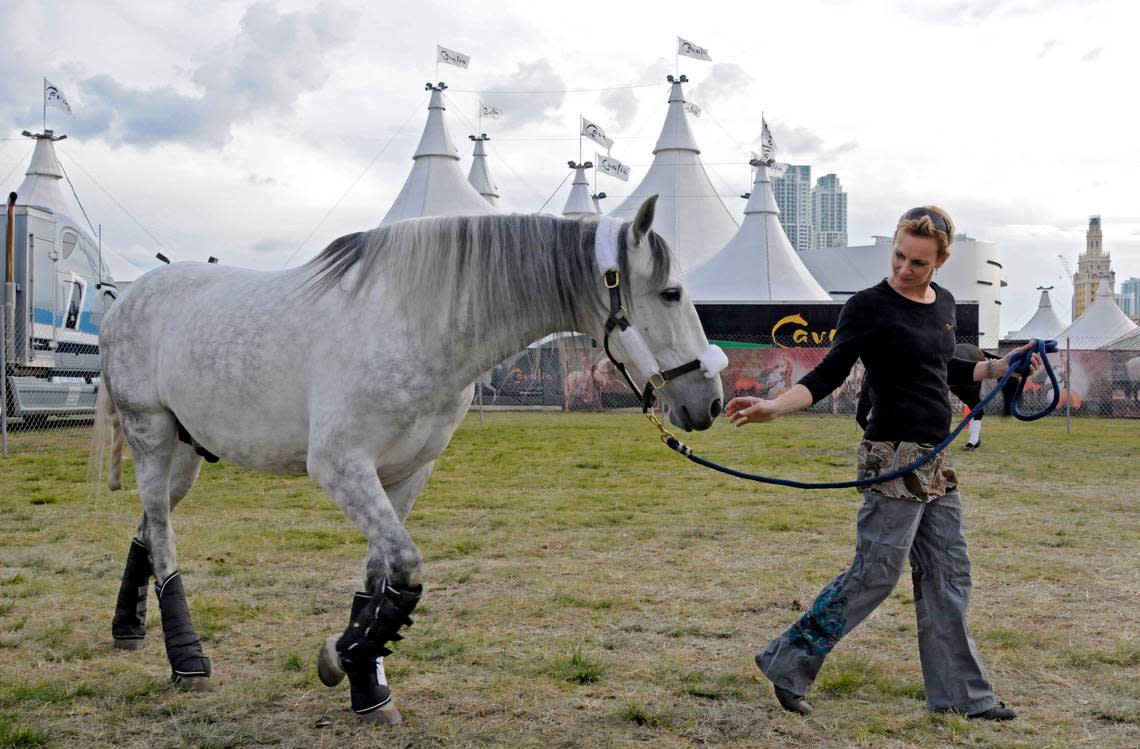
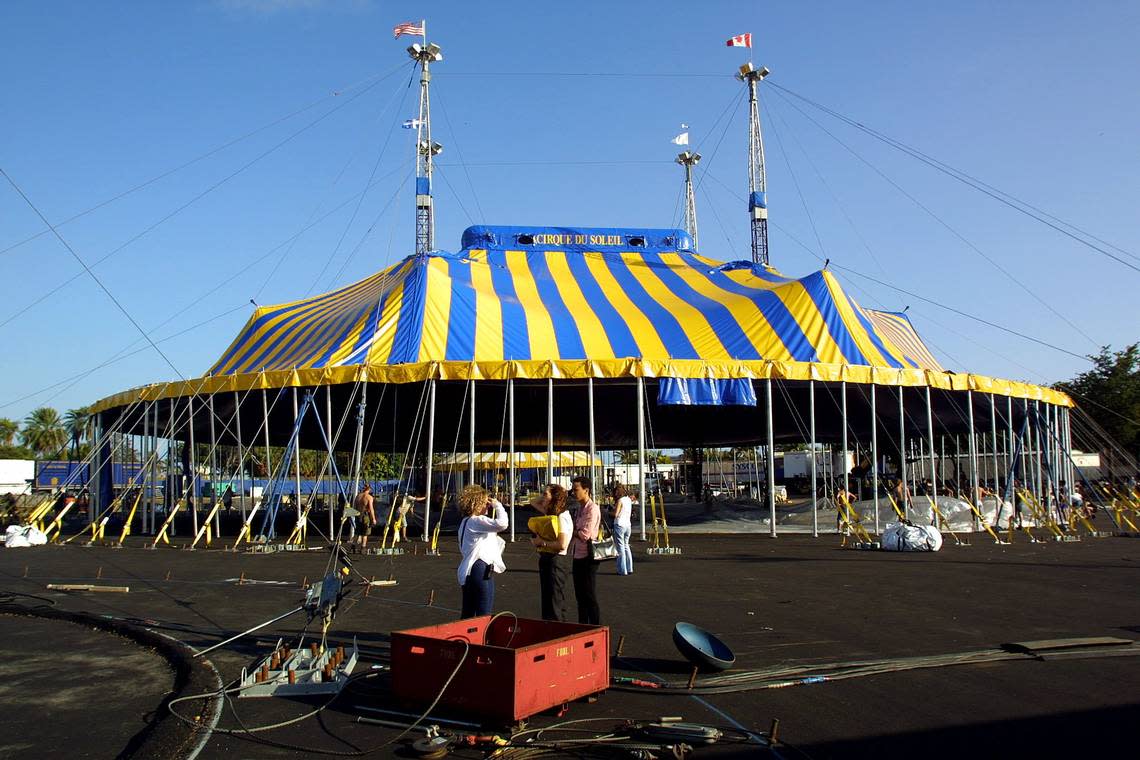
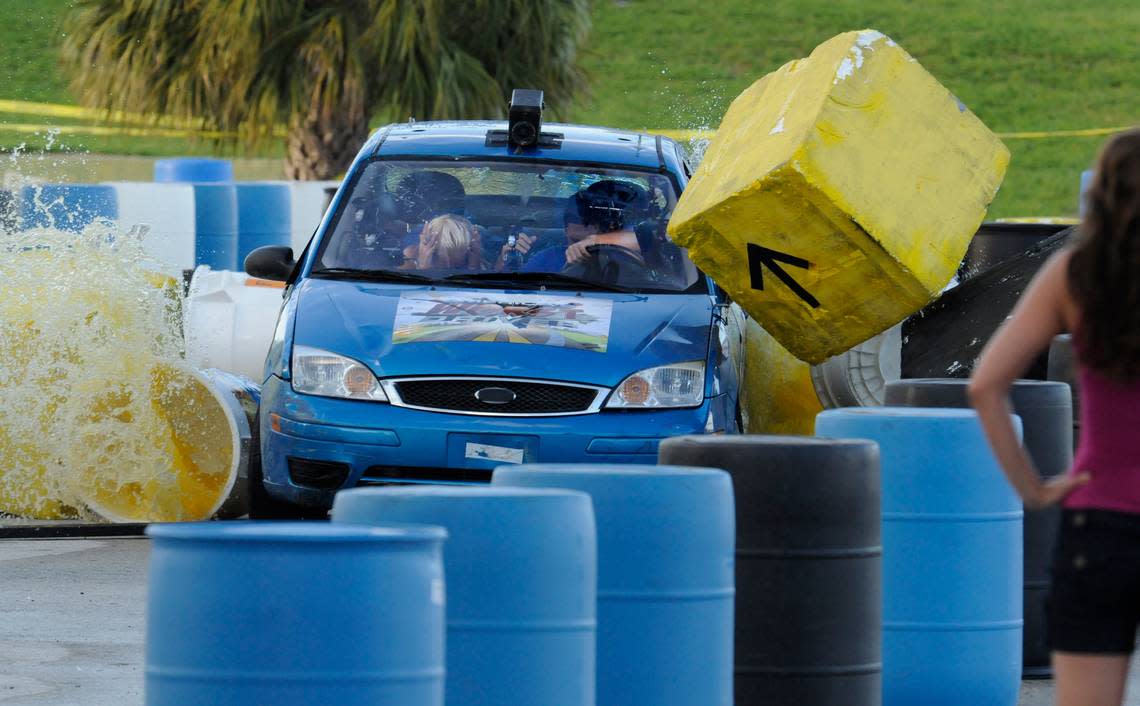
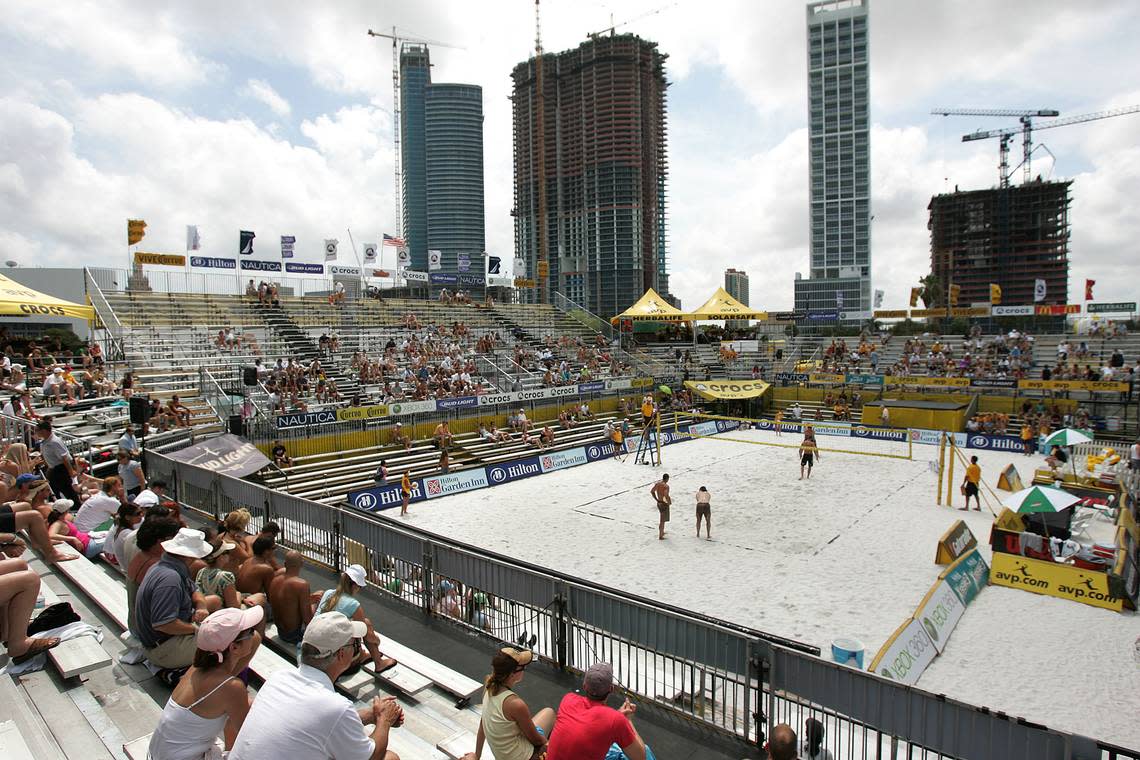
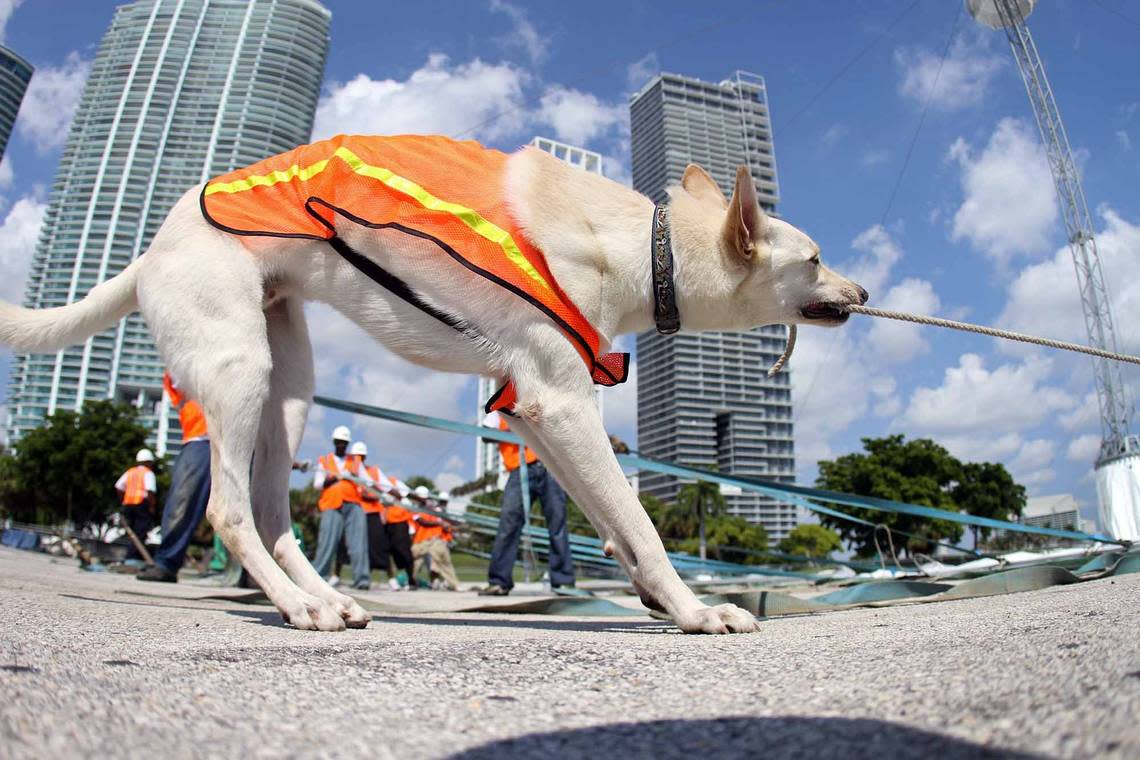
Bloody house of horror and other events
Published Oct. 13, 2003
By Daniel Chang
When candlelights flicker in darkened chambers and doorways open to oncoming trucks, when the bedroom’s air is deathly still and the kitchen smells of curdled blood, then Pedro Regalado cannot be far.
In fact, you can probably hear him cackling.
As the resident evil genius of Miami’s haunted House of Terror in Bicentennial Park, Regalado is the host with the ghosts, so to speak.
“If people don’t scream, then my name’s not Pedro,” he boasts with a laugh.
It is Regalado’s job to dream up the disemboweled corpses, brain-eating ogres and chain saw murderers who raise the hair on the estimated 100,000 necks that will pass through his gauntlet of ghouls this year.
Not that everyone makes it through the 22 scenes of ghastly delights.
“Fifty to sixty people a night usually don’t make it through the entire house,” he says, noting that attendance varies from between 2,000 and 8,000 a night.
For them, Regalado, a considerate host, has carved out exits in every other room and, in years past, he has even called paramedics for the ones who fainted.
“I didn’t feel good about it,” he says, almost apologetic. “Thank God nobody has died.”
Regalado’s gift is finding fear in everyday events, even if it is uncommon to encounter ghouls hoisting drinks in a haunted saloon or hands reaching out from disinterred caskets.
Those kinds of gags are pretty much standard in any haunted house. Regalado’s best work exploits people’s fear of the unexpected and unknown.
“I try to take real experiences and make them scary,” he says. “Just opening a door can be a scary experience. Not knowing which door to open is a scary experience. Not knowing how you’re going to get out of a room is a scary experience.”
So one doorway opens to a Ford Bronco barreling down the hall - horn honking, engine screaming, tires peeling out - and an assortment of pitch black mazes and claustrophobic caves challenge guests to escape.
“Your worst fear, or little things you’re afraid of,” Regalado says, “I can turn them into big scenes for the house.”
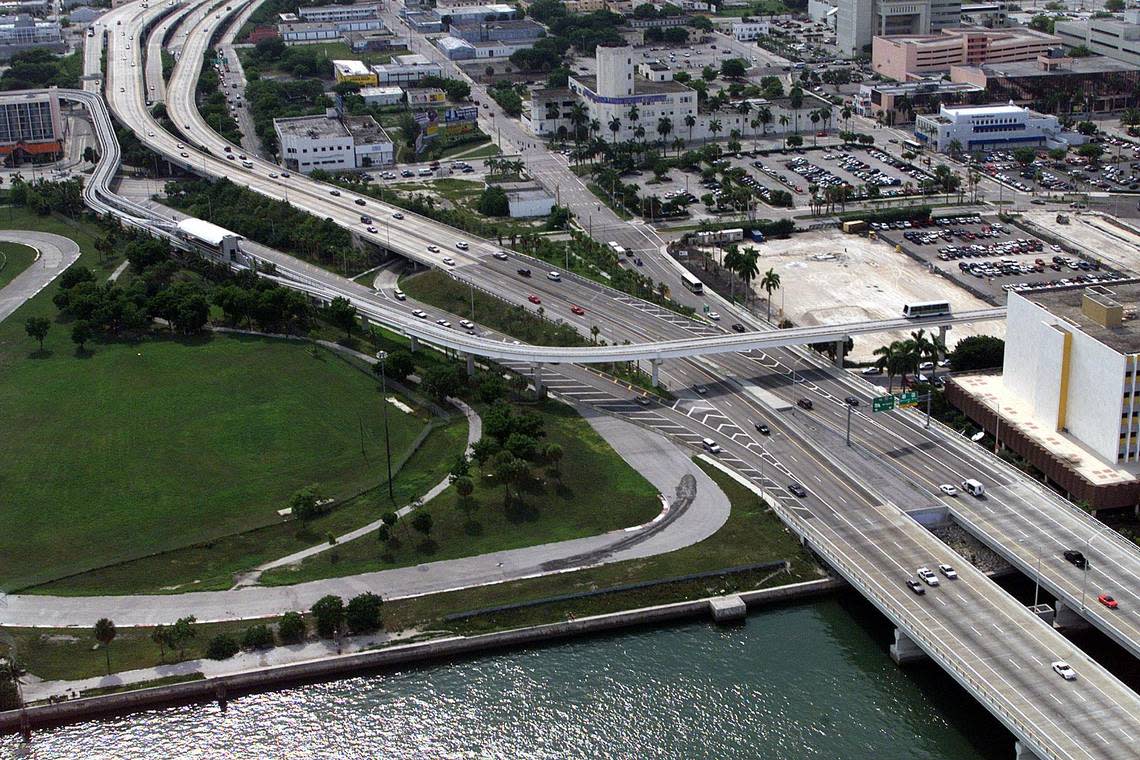
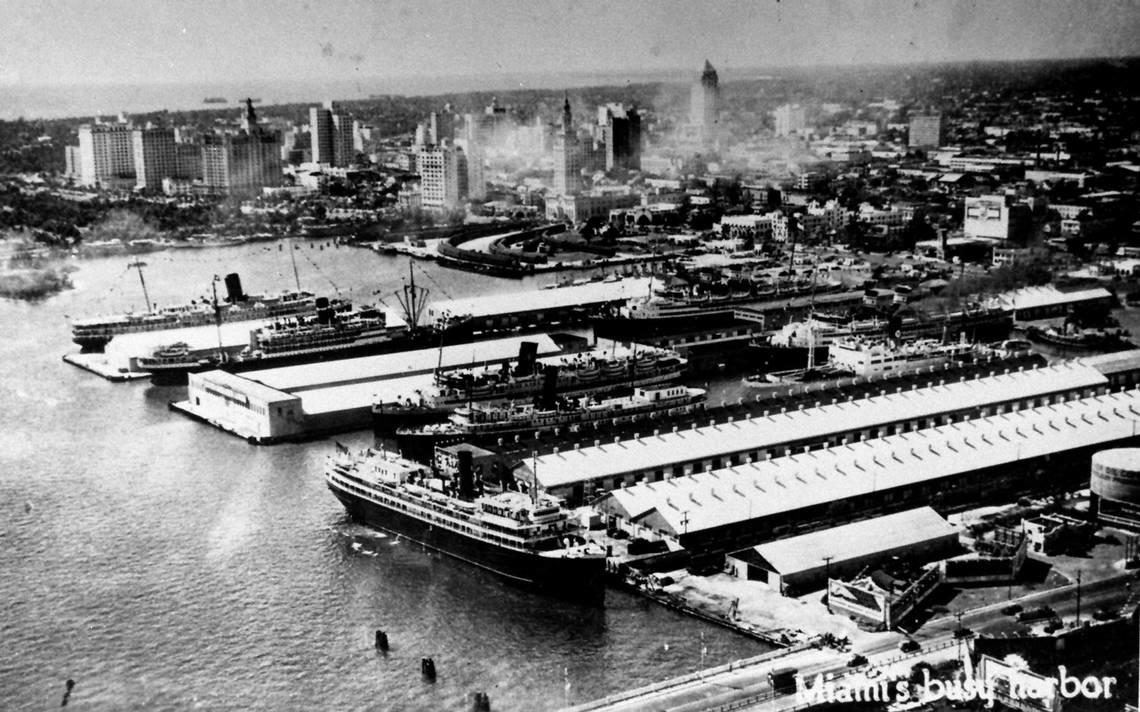
An urban vision
Published March 25, 2001
By Beth Dunlop
Bicentennial Park has been held hostage for almost a quarter-century now, a victim of politics, bad design and misplaced values. It could be Miami’s grandest green space, a bayfront park that would allow us to celebrate history and culture, nature and architecture.
But from its opening in January 1977, Bicentennial Park has been walled off from the city, the large berms facing Biscayne Boulevard an imposing disincentive to enter. Though the intent was to make this 34-acre park a sanctuary, a retreat in a busy city, the effect was the opposite. The design - and a host of crimes soon after the opening - scared people off. The park was left to deteriorate.
Along the way, Bicentennial has served as a pawn in schemes and occasional dreams, proposals to make it an automotive raceway, an annex to the port of Miami, a haven for the homeless, a baseball stadium, an exposition center, a performing arts center, an art museum, a science museum, a maritime museum.
In Miami, every undeveloped tract of land, parks included, seems to be on the block, waiting for the highest bidder, false logic at work.
But parks are not property. The cities we cherish most are memorable for their parks and plazas, for great landscaped avenues. Imagine Paris without the Tuilleries, without the Champs d’Elysées. Imagine New York without Central Park, Boston without its public gardens, Washington without its Mall or Pennsylvania Avenue.
Study after study has proved that the public landscape - be it a 100-acre park or trees in a median - enhances real estate values. The quality of life we yearn for cannot exist without green space, not to mention the air we breathe. Elsewhere, in cities large and small, urban parks are in renaissance, restored and refurbished. Other cities have rescued parks from the brink, and the list is a long one: New York, Atlanta, Cleveland, Chicago, Houston, St. Louis, Denver, San Francisco, Los Angeles and more. Parks that were once havens for muggers and addicts, from Bryant Park in New York to Skyline Park in Denver, are being transformed into outdoor living rooms.
Indeed, the urban parks movement is flourishing all across America, and some are trying to make Miami part of it. The widespread public outcry against putting a baseball stadium in the park shows there is a mandate to reclaim Bicentennial. Two design charrettes, one last year and one this, drew hundreds of participants.
The first of these was run by the ever-vigilant Urban Environment League, the civic organization that has emerged as the chief protector of our parks. That charrette produced a handsome schematic plan showing an old-fashioned landscaped park with cafes, fountains, promenades and informal ball fields - a park with places to sit, stroll, play or just loll. The park would be open, accessible and, best of all, beautiful. It would offer grand vistas of downtown and ever-more-precious public access to Biscayne Bay.
Though two cultural institutions, the Miami Museum of Science and the Miami Art Museum, would like to build in the park, it’s wise to be wary there. Indeed, museums are attractions, but they also need truck access, parking, freight entrances and more. By their very nature they are inward-turning, which begs the point of the bayfront setting.
Better would be a maritime museum, an aquarium, an indoor-outdoor children’s museum - all proposals that emerged at the 2000 charrette. A restored park does need activities, though far simpler attractions might suffice.
It would be unwise for the city to rush headlong into a commitment without evaluating all the possibilities. The city and the county ought to develop a strategic plan for cultural facilities. Does a maritime museum fit better at the old Marine Stadium site? Could an art museum be built on Biscayne Boulevard across from Bicentennial Park, or would Dinner Key be a better place? Or would Dinner Key be a better location for the Museum of Science, letting MAM build where the science museum now is, on the grounds of the Vizcaya Farm Village? And who is to use the Miami-Dade Cultural Center?
On the surface, these questions may seem to have less to do with Bicentennial Park than with overall cultural policy, but until everybody gets a comfortable home, those 34 now-fallow bayfront acres are going to be in demand.
And there’s more. What happens next along Biscayne Boulevard and in Overtown/Park West is critical to the future of Bicentennial Park - and to the city as a whole. A restored Bicentennial Park would provide a splendid front yard for apartment dwellers along Biscayne Boulevard. The urban greenway - a pedestrian walkway and bike path connecting the river to the bay - envisioned by the Trust For Public Land would tie in Park West and Overtown. The AmericanAirlines Arena to the south and the planned Performing Arts Center to the north could generate plenty of foot traffic, especially if the park has cafes. One could envision pools and fountains, flower beds and trees, lining paths through the park. A bayfront promenade could lure walkers, runners, Rollerbladers, bicyclists.
One piece of the city links to the next; this synergy is critical to placemaking, to city building. And that’s what we’re doing here in Bicentennial Park. We’re not just planting new grass and plopping a fountain here and there. We’re defining a city, establishing an identity that is too-often left murky. Bicentennial Park offers Miami an enormous opportunity to create a park that is distinctive, beautiful, memorable - a park that speaks to the needs of a diverse population in a way that unites rather than divides.
The time to make Bicentennial into a park, for once and all, is now.
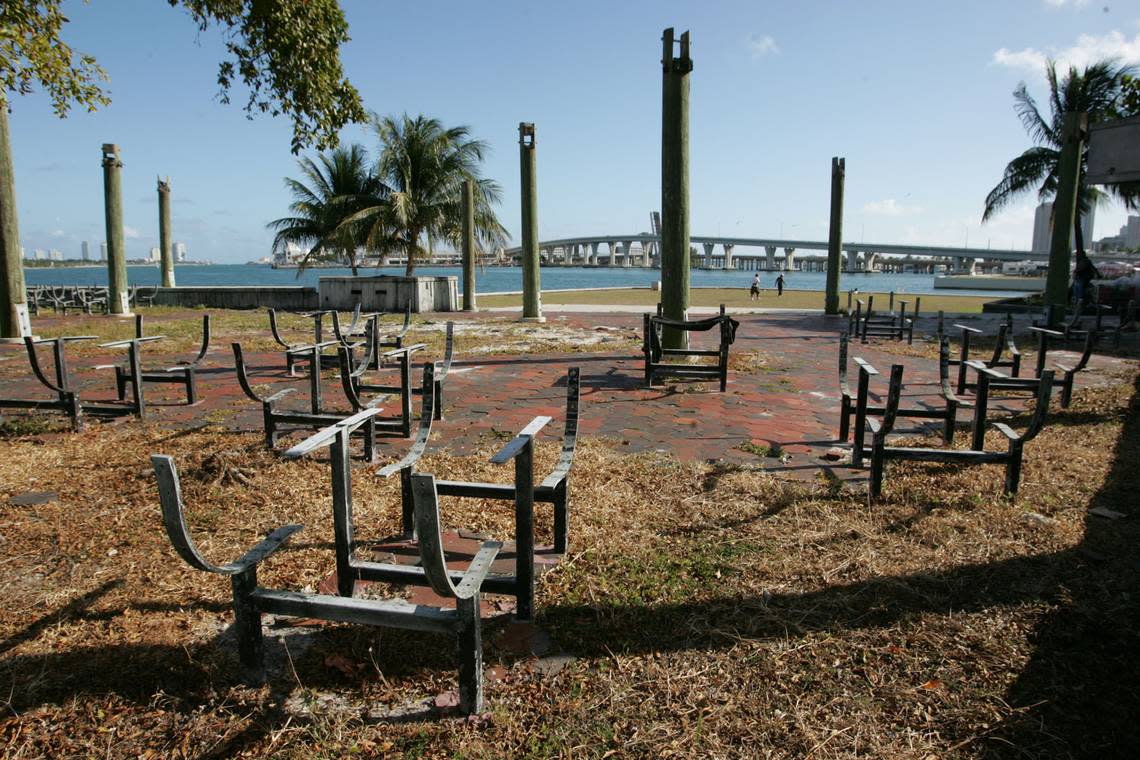
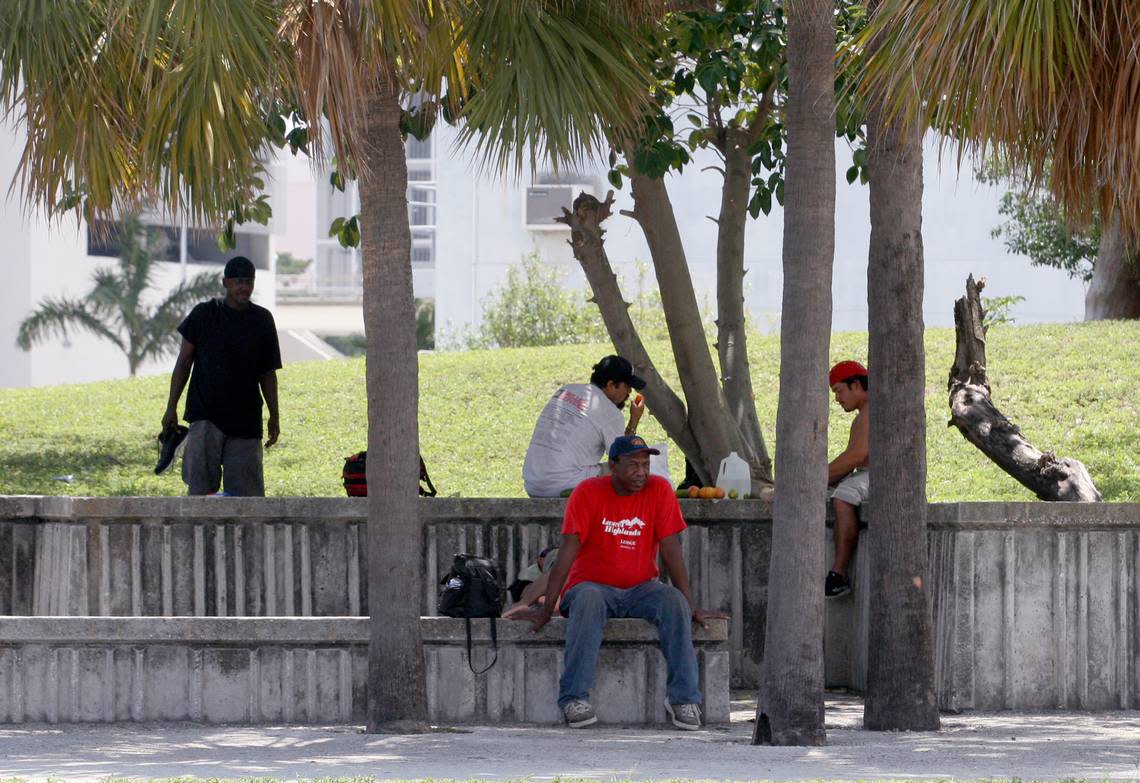
Lots of room but no view
Published Oct. 24, 1995
By Howard Kleinberg
To those concerned that imposing a port expansion and a new sports arena in downtown Miami’s Bicentennial Park takes away the public’s view, let it be understood that the public never really had a view of the bay there.
Pioneering types around the turn of the century used the area for a swimming spot, but that’s about it.
Until 1926 Biscayne Boulevard didn’t run west of today’s park; it ended at approximately Northeast Sixth Street. So no motorist was able to pass by and gaze out to the bay.
After the boulevard was extended north to Northeast 13th Street, Miami’s seaport was located on the site. Again the public’s view of the bay was impeded by freighters, cruise ships, piers, and terminal buildings.
The idea of finally obtaining a view of the bay there came along with planning for the existing park, dedicated in 1976 during the nation’s Bicentennial celebration.
Much to the shock of most Miamians, however, was the large berm constructed on the Biscayne Boulevard side of the park. It made it impossible for motorists or pedestrians to see the bay, or anything inside the park.
Bicentennial Park ranks along with Interama and the Golden Glades Interchange as this area’s maximum fiascos. The park is used principally by derelicts except for one weekend each winter when the Miami Grand Prix runs there. But the race will move to Homestead in 1996.
Most people fear the park as a hotbed of crime, drugs, and other dubious goings-on. People who know me categorize me properly in the camp of historic preservation and environmentalism. But I am not an intransigent zealot and will not chain myself to any coconut tree in defense of Bicentennial Park.
Rather than a passive space, it is a festering sore that needs redefinition. Assuming that the Performing Arts Center is built a few hundred yards to the north, using the park for a new sports arena and a port expansion - provided that the port does not moor unsightly old freighters there - could make it a most busy center of activity for tourists and residents alike, with some park land left for people to see the bay at long last.
How well used is Bicentennial Park today? There’s a way to get an idea. Because no parking is allowed there, the next best criterion is through the public’s use of the Bicentennial Park Metromover station. Metrorail marketing spokesman Manny Palmero reports that 287 souls boarded Metromover there in May 1995, the latest month for which figures are available.
This surprised me - I thought that it would be less - until I was told that Bicentennial Park is remarkably deep in last place among Metromover stations. The next worst, nearby Northeast 11th Street, had 1,481 board in the same month. The leader, outside of Government Center, was the Omni complex, where 37,000 boarded in May. Bicentennial Park is hardly a blip on Metromover’s turnstile charts.
If you don’t use the park, and if you can’t see the bay past it, and if it is nothing but a place for derelicts or worse, one must question the tax dollars spent to maintain this 38-acre leech of a property.
How an arena can be financed there, if an arena and supplemental port should be built there, is not the subject of this discourse; that will come later. But it’s about time to admit the mistake in the creation of Bicentennial Park and to move on to something that will benefit residents and tourism alike.
